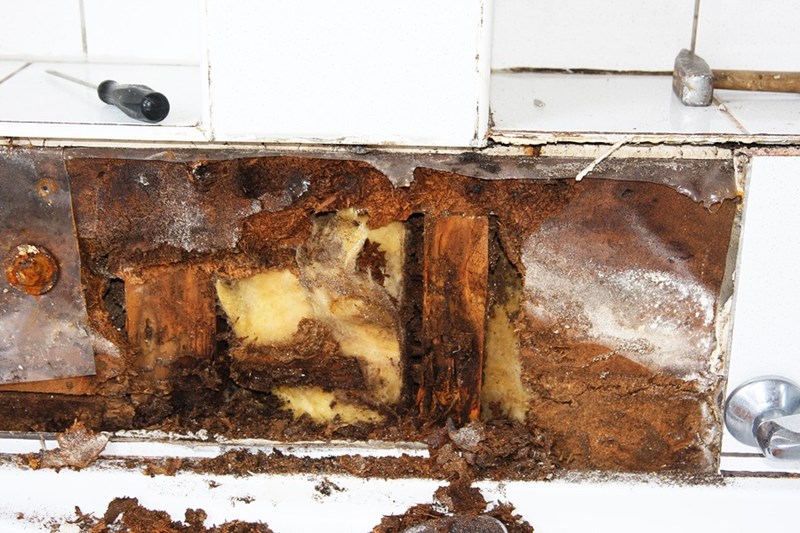Nearly everybody seems to have their private rationale when it comes to Common Causes of Water Damage in a Bathroom.

The shower room is exceptionally at risk for moist accumulation as well as possible water damage because of the constant use water in it. This article uses straightforward inspection methods to assist finding water damages dangers.
The constant use water in the bathroom makes it extremely vulnerable for damp build-up and also possible water damage. By examining it frequently, you can decrease water associated damages.
The complying with set of assessments is simple to do as well as ought to be done when in every three months in order to keep your restroom in good shape and to prevent possible water problems caused by the bath tub, the shower, pipeline joints and plumbing, sinks, closets, as well as the toilet
Do not forget carrying out these inspections as well as be comprehensive while executing them. Bear in mind that these easy inspections can conserve you a lot of money by giving very early indications for water damages
Tub as well as Shower
The shower and bath tub need unique focus and upkeep. Inspect the tiles and change if broken. Make sure that there is no missing out on cement between the ceramic tiles. Inspect and change split caulking at joints where the wall surfaces fulfill the flooring or the tub. Clogged drains pipes and also pipes problems will certainly avoid the bathtub from drying out as well as may show major troubles underneath the bathtub. Seek advice from an expert right away to stop structural damage. Focus on discolorations or soft locations around the tub walls as they might indicate an inner leak.
Plumbing
Signs for water damages are difficult to detect given that a lot of pipes are mounted inside the wall surfaces.
Pay special interest to flooring as well as walls wetness and spots as they may suggest an invisible plumbing trouble. Check moisture degrees in adjoining spaces as well.
Sinks as well as Cabinets
Sinks and cupboards are revealed to wetness and also humidity day-to-day and are commonly overlooked. Check routinely under the sink and also on the countertop over it. Fix any type of drip in the catch as it may suggest drainpipe problems. Browse the sink, slow-moving draining pipes might indicate a blocked drainpipe. Change sink seals if they are broken or loosened.
The Commode
The toilet is a prone water junction. Check the water lines as well as look for leaks around the bathroom seat, in the tube, and under the water storage tank. If you find any indications of wetness on the flooring around the toilet, check for leakages in the toilet edge and tank seals.
Know that hanging bathroom dish antiperspirants raises the opportunities for obstructions.
Water Damage Signs In The Bathroom To Avoid Cleanup
Musty smell
This is one of the easiest signs to catch because musty smells are so odorous. The damp, earthy, moldy smell should be a big red flag. The smell will develop when moisture gets trapped in surfaces, and begins to facilitate mold growth. Leaking pipes under cabinets, inside walls, and behind shower fixtures will cause moisture to stay trapped and not dry, which will lead to mold growth and spread. As soon as you notice any musty smells in your bathroom, have it checked for hidden water damage and cleanup signs.
Visible mold
If the smell isn’t there to give it away, sometimes you will actually see mold growth. Finding mold in your bathroom is a serious problem, because mold is very harmful to your health. By the time mold growth is visible, it also means that water damage has already occurred and been present for some time. The only way the mold problem can be resolved is to find the source of the moisture and get it stopped. To safely and adequately remove mold, you need to have professionals handle the remediation. Do not waste any time in getting mold problems addressed, fixed, and sanitized so that you can protect you and your family from the many respiratory symptoms caused by mold exposure.
Damaged floors
Bathroom floors should be able to withstand some exposure to water while still remaining in good condition. However, when excess exposure or water leaks occur, they will begin to damage even the most water-resistant flooring. If you notice any cracking, bubbling, staining, or warping on your bathroom floors, there is probably a water leak somewhere causing the distortion. If you notice areas of the floor have become softer, or even have a spongy feeling, there is probably damage to the subfloor. Subflooring is typically made up of plywood. When plywood is exposed to water or moisture, it will absorb it. Once it has become saturated, the weight of the excess water will cause the wood to swell and soften. Check the floors in your bathroom frequently to catch any of these sings before they lead to damaged subflooring.
Changes on walls
When water leaks behind walls, it will cause changes in the drywall. Peeling plaster, blistering paint, and soggy wallpaper are all good indicators that excess water is building up behind the wall. Water leaking behind drywall will cause it to swell and be soft to the tough. If you start to notice gaps along the trim of your walls, or where tile meets the wall, it could also be a strong indicator that there is a leak behind the wall. Any changes, distortion, or damage on the walls should be evaluated as soon as you notice it to prevent further water damage and cleanup.

I'm certainly very interested by Looking for Signs of Water Damage in the Bathroom and I hope you enjoyed our blog post. Are you aware of somebody who is fascinated with the topic? Be sure promote it. Thank you for going through it.
Visit Url